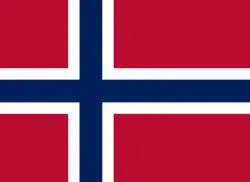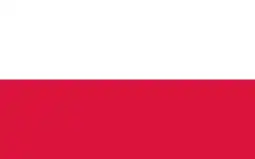Erik Testrup | |
|---|---|
 | |
| Birth name | Erik Mathias Hjalmar Gustafsson Testrup |
| Born | 14 September 1878 Landskrona, Sweden |
| Died | 18 December 1972 (aged 94) Stockholm, Sweden |
| Allegiance | Sweden |
| Service/ | Swedish Army |
| Years of service | 1898–1943 |
| Rank | Lieutenant General |
| Commands held | |
Lieutenant General Erik Mathias Hjalmar Gustafsson Testrup (14 September 1878 – 18 December 1972) was a Swedish Army officer. His senior commands include commanding officer of the Eastern Army Division of the IV Army Division, Commandant General of Stockholm Garrison and as military commander of the IV Military District.
Early life
Testrup was born on 14 September 1878 in Landskrona, Sweden, the son of lieutenant colonel Gustav Testrup and his wife Mathilda Gerlin.[1]
Career
Military career
He was commissioned as an officer in Kronoberg Regiment in 1898 with the rank of underlöjtnant. Testrup was promoted to lieutenant in 1902 and attended the Royal Swedish Army Staff College from 1904 to 1906. He then served in the General Staff in 1910 and he was promoted to captain in 1912. Testrup served as a teacher at the Royal Swedish Army Staff College from 1914 to 1915 and at the Royal Swedish Naval Staff College from 1915 to 1919. In 1917, he made a study trip to the German Western Front and served in the Göta Life Guards from 1917 to 1919, when he was promoted to major and served in the General Staff.
In 1922, Testrup was promoted to lieutenant colonel and appointed head of the Royal Swedish Army Staff College. In 1925, he made a study trip to the Netherlands and to England (and to Finland in 1930) and the year after he was promoted to colonel and was appointed regimental commander of the North Scanian Infantry Regiment. Testrup was then commanding officer of the Military Office of the Land Defence from 1929 to 1932 and brigade commander in the Western Army Division from 1932 to 1936. He was promoted to major general in the army in 1934 and in 1936 he was appointed commanding officer of the Eastern Army Division and Commandant General of Stockholm Garrison.[1]
In 1937, Testrup was appointed commanding officer of the IV Army Division. During this time he continued serving as Commandant General of Stockholm Garrison. In 1939, he visited the field service exercises on the Karelian Isthmus. He was appointed military commander of the IV Military District in 1942 and in 1943 Testrup retired from active service and was at the same time promoted to lieutenant general.[1]
Other work
Testrup was an expert on the army's providing with technical equipment from 1917 to 1918, on the training of certain technical officers from 1918 to 1921, secretary for the army in the Försvarsrevisionen from 1919 to 1923 and secretary of the General Commission (Generalkommissionen) in 1923. He was at the disposal of the Ministry of Defence for drafting a new army regulation from 1923 to 1924, secretary of the Land Defense (Lantförsvaret) in the Riksdag's Special Committee in 1924, and was an expert on the infantry exercise regulations and field service regulations from 1926 to 1927.[1] In 1929, Testrup became a Riksdag's Upper House for The Right in 1929.[2]
Testrup was chairman of the military association KHS from 1924 to 1926, of the Norra skånska landstormsförbundet ("North Scanian Landstorm Association") from 1927 to 1930, of the Föreningen för befrämjandet av skolungdomens vapenövningar ("Association for the Promotion of Weapon Exercises for Students") from 1937 to 1947, of the Stockholm district of Militär Idrott from 1937 to 1943, of the Stockholm district of the Swedish Red Cross from 1943 to 1954 and of the General Commission for Voluntary Health Care in War from 1944.[2] He was also vice chairman of Bönnelyche & Thuröe AB from 1947 to 1959 and a member of the Executive Board of the H.M. Konungens Militärhospitals- och Medaljfonder from 1947 to 1964.[3]
Personal life
In 1904, he married Ebba Thuröe (1883–1963), the daughter of Lauritz Thuröe and Christine Bönnelyche.[3]
Death
Testrup died on 18 December 1972. He was buried on 26 January 1973 in the Old Cemetery in Strängnäs in the same grave as his parents and his wife.[4]
Dates of rank
- 1898 – Underlöjtnant
- 1902 – Lieutenant
- 1912 – Captain
- 1919 – Major
- 1922 – Lieutenant colonel
- 1926 – Colonel
- 1934 – Major general
- 1943 – Lieutenant general
Awards and decorations
Swedish

 King Gustaf V's Jubilee Commemorative Medal (1948)[5]
King Gustaf V's Jubilee Commemorative Medal (1948)[5]
 Commander Grand Cross of the Order of the Sword (6 June 1941)[6]
Commander Grand Cross of the Order of the Sword (6 June 1941)[6]
 Commander 1st Class of the Order of the Sword (22 November 1932)[7]
Commander 1st Class of the Order of the Sword (22 November 1932)[7]
 Commander 2nd Class of the Order of the Sword (6 June 1930)[8]
Commander 2nd Class of the Order of the Sword (6 June 1930)[8]
 Knight 1st Class of the Order of the Sword (1919)[9]
Knight 1st Class of the Order of the Sword (1919)[9]
 Commander 1st Class of the Order of Vasa (16 June 1933)[10]
Commander 1st Class of the Order of Vasa (16 June 1933)[10]
 Knight 1st Class of the Order of Vasa (1916)[11]
Knight 1st Class of the Order of Vasa (1916)[11]
 Knight of the Order of the Polar Star (1923)[12]
Knight of the Order of the Polar Star (1923)[12]
 Federation of Landstorm Associations Medal of Merit in gold[2]
Federation of Landstorm Associations Medal of Merit in gold[2] Lingiadens jubileumsmedalj ("Ligiad Commemorative Medal")[1]
Lingiadens jubileumsmedalj ("Ligiad Commemorative Medal")[1] Landstormsofficerarnas riksförbunds hederstecken i guld ("Federation of Landstorm Associations Badge of Honor in Gold")[2]
Landstormsofficerarnas riksförbunds hederstecken i guld ("Federation of Landstorm Associations Badge of Honor in Gold")[2] Swedish Red Cross' Silver Medal[2]
Swedish Red Cross' Silver Medal[2] SthlmsIfbGM[2]
SthlmsIfbGM[2] Central Board of the National Swedish Rifle Association's Silver Medal (Sveriges skytteförbunds överstyrelses silvermedalj)[2]
Central Board of the National Swedish Rifle Association's Silver Medal (Sveriges skytteförbunds överstyrelses silvermedalj)[2] Föreningen för befrämjande av skolungdomens vapenövningars guldmedalj ("Association for the Promotion of Weapon Exercises for Students' Gold Medal")[2]
Föreningen för befrämjande av skolungdomens vapenövningars guldmedalj ("Association for the Promotion of Weapon Exercises for Students' Gold Medal")[2]
Foreign

 2nd Class of the Order of the Cross of the Eagle (between 1931 and 1935)[13][14][15]
2nd Class of the Order of the Cross of the Eagle (between 1931 and 1935)[13][14][15]
 Commander 1st Class of the Order of the White Rose of Finland (between 1931 and 1935)[13][14]
Commander 1st Class of the Order of the White Rose of Finland (between 1931 and 1935)[13][14]
 Commander 2nd Class of the Order of the White Rose of Finland (between 1925 and 1928)[16][17]
Commander 2nd Class of the Order of the White Rose of Finland (between 1925 and 1928)[16][17]
 Knight 1st Class of the Order of the White Rose of Finland (between 1918 and 1921)[18][19]
Knight 1st Class of the Order of the White Rose of Finland (between 1918 and 1921)[18][19]
.svg.png.webp) Order of the German Eagle (with degree as in Swedish is stated as Grand Officer) (1942)[20][21]
Order of the German Eagle (with degree as in Swedish is stated as Grand Officer) (1942)[20][21]
 Commander 2nd Class of the Order of the Dannebrog (between 1931 and 1935)[13][14]
Commander 2nd Class of the Order of the Dannebrog (between 1931 and 1935)[13][14]
 Commander of the Order of Orange-Nassau with Swords (between 1925 and 1928)[16][17]
Commander of the Order of Orange-Nassau with Swords (between 1925 and 1928)[16][17]
 Commander of the Order of St. Olav (between 1925 and 1928)[16][17]
Commander of the Order of St. Olav (between 1925 and 1928)[16][17]
 Commander 2nd Class of the Order of Polonia Restituta (between 1931 and 1935)[13][14]
Commander 2nd Class of the Order of Polonia Restituta (between 1931 and 1935)[13][14]
 Officer of the Legion of Honour (between 1931 and 1935)[13][14]
Officer of the Legion of Honour (between 1931 and 1935)[13][14]
.svg.png.webp) Knight of the Order of Saints Maurice and Lazarus (between 1909 and 1915)[22][23]
Knight of the Order of Saints Maurice and Lazarus (between 1909 and 1915)[22][23] White Guard's Cross of Merit[2]
White Guard's Cross of Merit[2] Finnish Red Cross' Cross of Honor[2]
Finnish Red Cross' Cross of Honor[2] Finnish commemorative medal for humanitarian activities[2]
Finnish commemorative medal for humanitarian activities[2] French Red Cross's Gold Medal[2]
French Red Cross's Gold Medal[2].svg.png.webp) German Red Cross' Badge of Honor[2]
German Red Cross' Badge of Honor[2]
Honours
- Member of the Royal Swedish Academy of War Sciences (1924), its president 1943–1945[2]
- Member of the Royal Patriotic Society[2]
- Member of the Royal Swedish Pro Patria Society[2]
- Member of the Idun Society (Sällskapet Idun)[2]
- Member of the Arla Coldinu Orden, its president 1939–1956[2]
References
- 1 2 3 4 5 Harnesk, Paul, ed. (1945). Vem är vem?. D. 1, Stockholmsdelen [Who's Who?. D. 1, Stockholm part] (in Swedish). Stockholm: Vem är vem bokförlag. p. 864. SELIBR 8198269.
- 1 2 3 4 5 6 7 8 9 10 11 12 13 14 15 16 17 18 Harnesk, Paul, ed. (1962). Vem är vem? 1, Stor-Stockholm [Who's Who? 1, Greater Stockholm] (in Swedish) (2nd ed.). Stockholm: Vem är vem. p. 1285. SELIBR 53509.
- 1 2 Lagerström, Sten, ed. (1968). Vem är det: svensk biografisk handbok. 1969 [Who is it: Swedish biographical handbook. 1969] (in Swedish). Stockholm: Norstedt. p. 945. SELIBR 3681519.
- ↑ "Testrup, Erik Mathias Hjalmar Gustafsson". www.svenskagravar.se (in Swedish). Retrieved 10 February 2020.
- ↑ Sveriges statskalender för året 1955 (in Swedish). Stockholm: Fritzes offentliga publikationer. 1955. p. 352.
- ↑ Sveriges statskalender för året 1955 (in Swedish). Stockholm: Fritzes offentliga publikationer. 1955. p. 8.
- ↑ Sveriges statskalender för skottåret 1940 (in Swedish). Uppsala: Fritzes offentliga publikationer. 1940. p. 12.
- ↑ Sveriges statskalender för året 1931 (in Swedish). Uppsala: Fritzes offentliga publikationer. 1931. p. 16.
- ↑ Sveriges statskalender för året 1925 (in Swedish). Uppsala: Almqvist & Wiksell. 1925. p. 845.
- ↑ Sveriges statskalender för året 1955 (in Swedish). Stockholm: Fritzes offentliga publikationer. 1955. p. 129.
- ↑ Sveriges statskalender för året 1925 (in Swedish). Uppsala: Almqvist & Wiksell. 1925. p. 1027.
- ↑ Sveriges statskalender för året 1955 (in Swedish). Stockholm: Fritzes offentliga publikationer. 1955. p. 117.
- 1 2 3 4 5 Sveriges statskalender för året 1931 (in Swedish). Uppsala: Fritzes offentliga publikationer. 1931. p. 87.
- 1 2 3 4 5 Sveriges statskalender för året 1935 (in Swedish). Uppsala: Fritzes offentliga publikationer. 1935. p. 235.
- ↑ Sveriges statskalender för skottåret 1940 (in Swedish). Uppsala: Fritzes offentliga publikationer. 1940. p. 268.
- 1 2 3 Sveriges statskalender för året 1925 (in Swedish). Uppsala: Almqvist & Wiksell. 1925. p. 319.
- 1 2 3 Sveriges statskalender för året 1928 (in Swedish). Uppsala: Almqvist & Wiksell. 1928. p. 243.
- ↑ Sveriges statskalender för året 1918 (in Swedish). Uppsala: Almqvist & Wiksell. 1918. p. 229.
- ↑ Sveriges statskalender för året 1921 (in Swedish). Uppsala: Almqvist & Wiksell. 1921. p. 214.
- ↑ Sveriges statskalender för året 1942 (in Swedish). Uppsala: Fritzes offentliga publikationer. 1942. p. 270.
- ↑ Sveriges statskalender för året 1943 (in Swedish). Uppsala: Fritzes offentliga publikationer. 1943. p. 277.
- ↑ Svensk rikskalender 1909 (in Swedish). Stockholm: P. A. Nordstedt & Söner. 1908. p. 174. SELIBR 498191.
- ↑ Sveriges statskalender för år 1915 (in Swedish). Uppsala: Fritzes offentliga publikationer. 1915. p. 205.